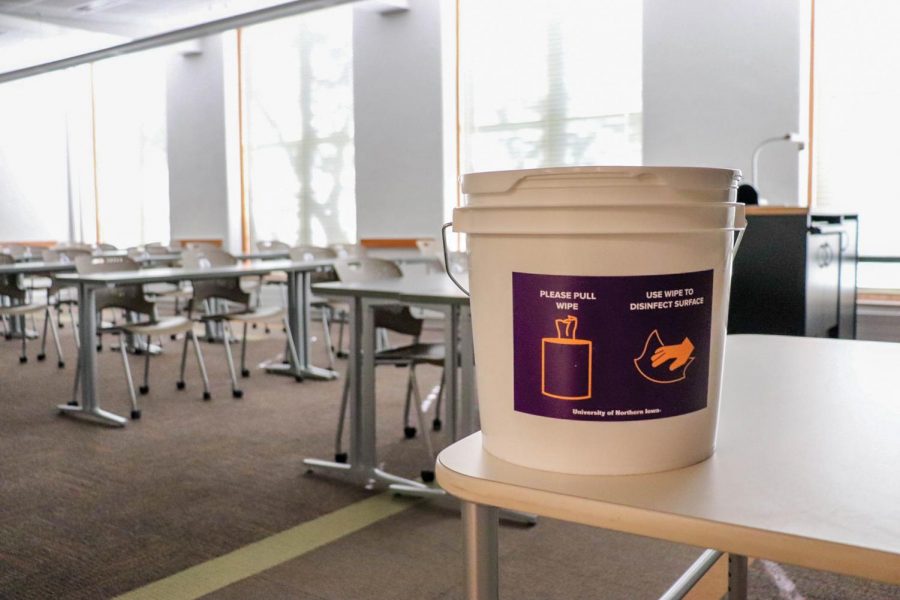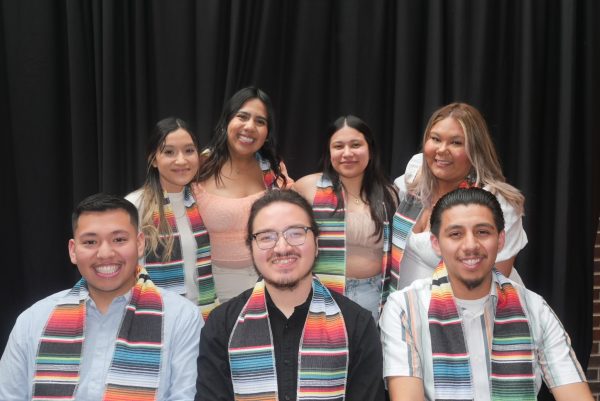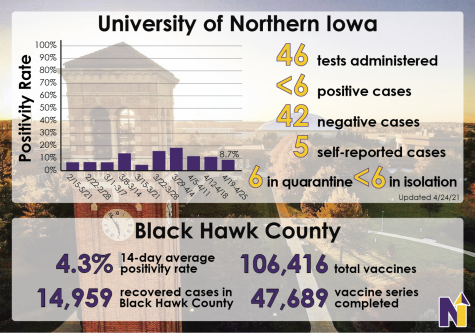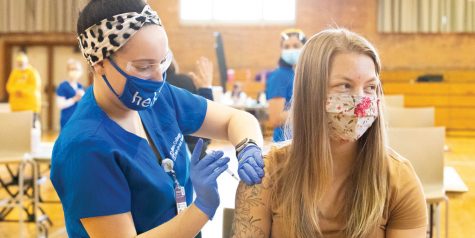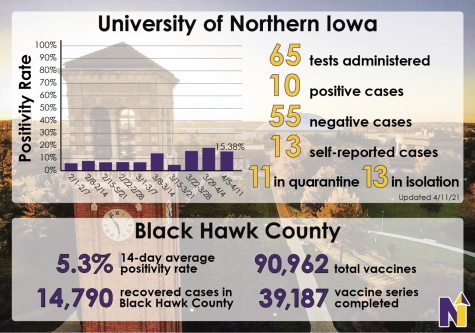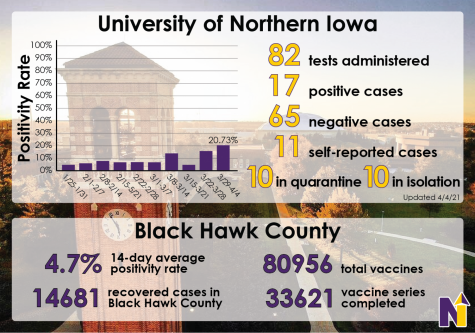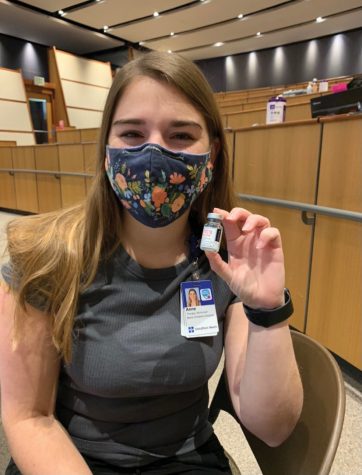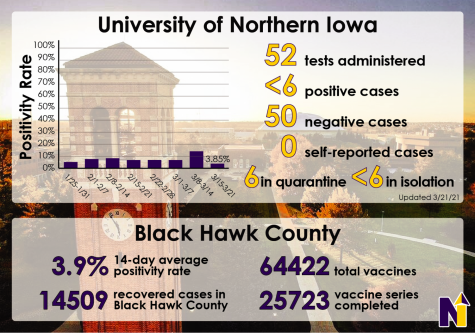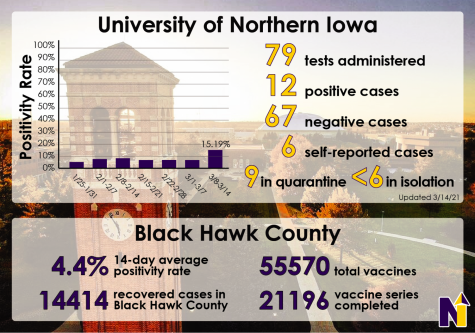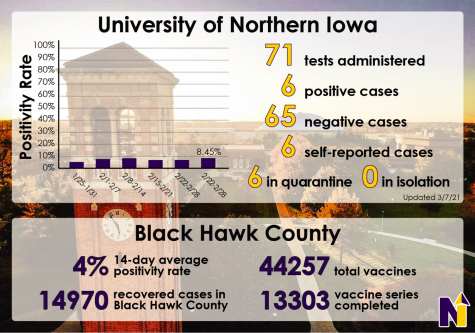As cases climb, some classes finish fall semester virtually
Some UNI professors have shifted their classes to virtual delivery at the end of the semester in the face of rising rates of COVID-19.
Nov 19, 2020
As UNI fast approaches the end of this uniquely challenging semester, some classes have made a last-minute change to online learning.
In these last couple of weeks, as COVID-19 cases skyrocketed in Black Hawk County and throughout Iowa, UNI gave professors the option to move their courses online for the remainder of the term. For the students whose professors choose this option, this means class from the safety of their homes and dorms, but in some cases also means facing the new challenge of online finals.
Dr. Julie Husband, professor of Languages and Literatures, has made this change to three of the classes she’s teaching this semester. She described her transition to fully online as a successful one, accrediting its ease to the high-flex class model she was already using this semester after receiving training in virtual education methods.
“I took training through continuing education a couple of years ago to teach a course for an outreach MA program, Teaching English in Secondary Schools,” Husband said.
She described the course as mainly online and intended for English teachers across Iowa.
“I taught that course over the summer,” Husband said, “then also took some of the additional training in using Blackboard offered through Instructional Technology so that I could offer my class in a high-flex mode.”
Husband’s high-flex mode, as she explained, consisted of meeting with her students in person in pods, while also offering a supportive online structure. This meant that should a student miss due to isolation or quarantine, they were still able to participate in class via Zoom and access any assignments and additional materials online.
She had determined to use this high-flex model even before the semester began, making sure that the foundation of her class relied on things that could aptly transition with ease to an online format. In this regard, when cases of COVID-19 began rapidly increasing in the last few weeks, it was fairly simple to switch her classes to a fully online structure.
In a similar vein, Dr. Deirdre Heistad, Executive Director and Professor of Undergraduate Studies, decided that online class was the way to go after some students in her small class of less than ten people suffered absences due to quarantine.
Heistad, who you won’t normally find in the classroom, assumed some teaching responsibilities this semester after some cuts were made in her department. As much as she’s enjoyed being back teaching students, this semester posed its own set of obstacles outside of her stepping back into a teacher’s shoes.
When asked about the eventual switch to solely online learning, she responded that she and, as far as she was aware, other professors, had begun preparing much earlier on.
“I designed my course knowing that this could be a possibility,” Heistad said, speaking about COVID-19 forcing classes online.
For Heistad, this meant including online resources even for classes which were designed to be in-person. For example, she included an “if absent” component when planning for each of her classes, which allowed students unable to be in in-person classes to complete an online module for the day they missed. She did this in cooperation with the university expectations that professors use “parallel planning” this semester.
“Faculty were asked to engage in parallel planning,” Heistad said, “because we knew that there could potentially be high absenteeism. We knew that we could have to pivot with very little notice, and we knew we would have to be flexible as the semester went on.”
Luckily, this parallel planning and preparation meant that her end-of-semester transition to fully online delivery was also an easy one. The only thing left to do in one of her three classes this semester, called Studies in Peer Education, was presentations for the students’ end of semester research projects.
“I just made the choice to ask the students who were presenting if they would be willing to do their presentations via Zoom, because that way everyone could be there,” Heistad said. “This is the culmination of the semester research project that everyone has learned about, and so I wanted everyone to enjoy hearing about it.”
In the end, it should come as no surprise that for dedicated faculty like Heistad and Husband, their hopes and thoughts remain chiefly with their students.
Heistad remarked that she was amazed by the resilience and willingness of her students and said that she was confident that if they were to bring these same things into the workforce, they would be successful.
Husband shared similar hopes for the students of UNI.
“This is a shared generational experience and one day they will reflect on it in the way that generations that went to war reflect. Many lost the end-markers of their senior year, others lost study abroad opportunities, jobs they relied on and, unfortunately, loved ones,” she said.
“I hope that they can feel proud of their resilience through this. I hope they know that the sacrifices they made to protect others are deeply appreciated and that older generations keep these sacrifices in mind as we consider policies regarding higher education funding, loan forgiveness, and tax policies that disproportionately fall on the young and wage-earners.”


